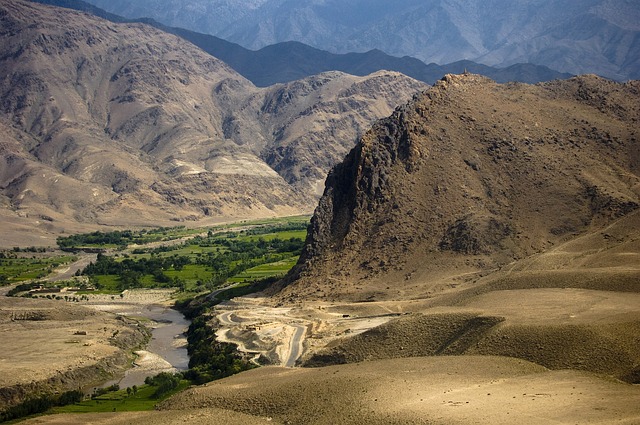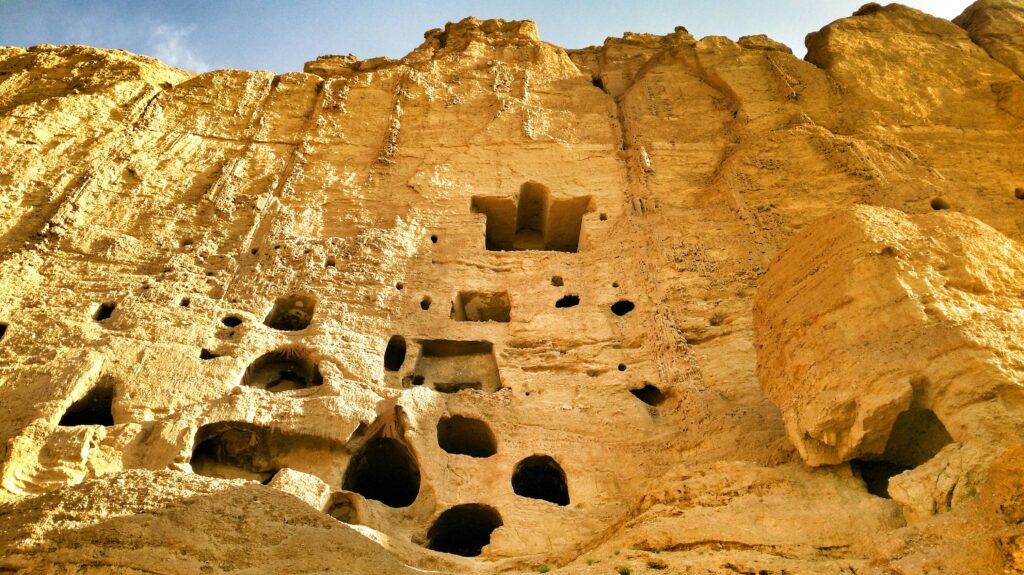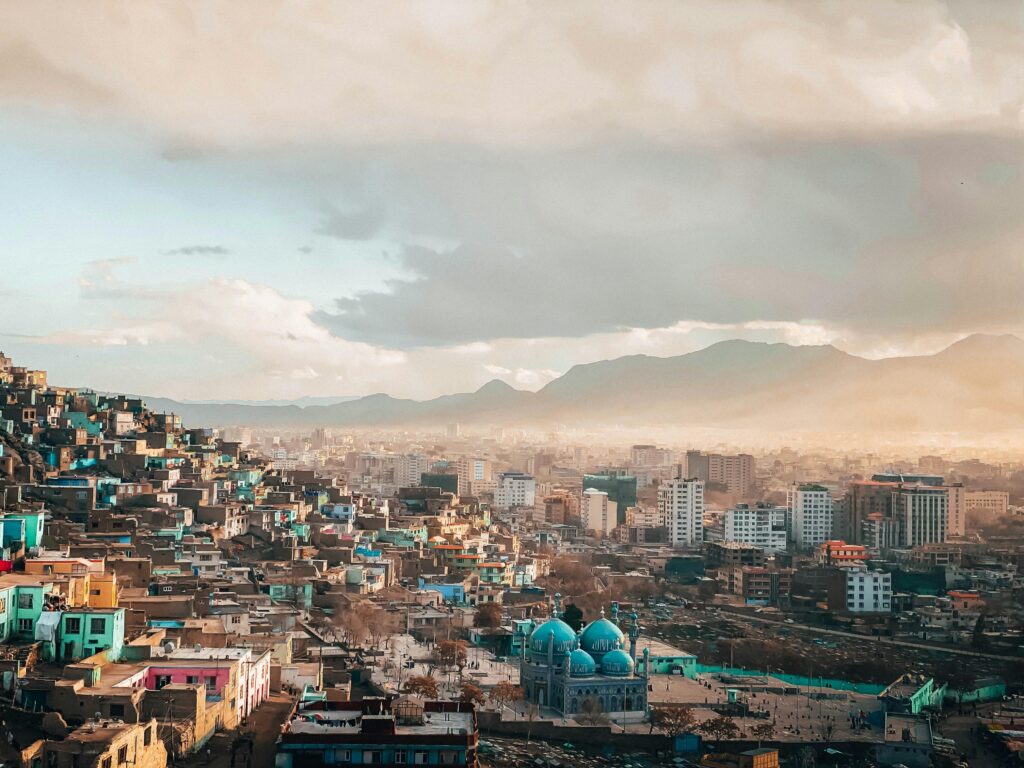Afghanistan / د افغانستان اسلامي امارت / امارت اسلامی افغانستان – Let’s explore here
What’s it like in Afghanistan?
Afghanistan is a stunning, landlocked country in central Asia. About the same size as France, it is mostly mountainous, dominated by the Hindu Kush mountain range, part of the Himalayas. The highest point is Mount Noshaq, in the east of the country, on the border with Pakistan, at 24,580 ft (7,492m) above sea level.
Its capital, Kabul, is one of the highest capitals in the world, at 5,873ft (1,790m) above sea level. The population of the country is around 35½ million people, about 4½ million of whom live in Kabul.
It has a very long, rich and troubled history. In former times it was a major trading and stopping point for those on the Silk Road. Its neighbours include China, Tajikistan, Pakistan, Uzbekistan, Turkmenistan and Iran.

A bit about the history of Afghanistan
Early History and Ancient Civilisations
Afghanistan, located at the crossroads of Central Asia and the Indian subcontinent, has been home to several ancient civilisations. The region was part of the Persian Empire and later influenced by the Greek Empire following Alexander the Great’s conquests in the 4th century BC. The ancient cities of Bactria and Gandhara thrived in Afghanistan, with significant contributions to culture, religion and trade.
Islamic Conquest and the Mongol Invasions
In the 7th century, Islam spread into Afghanistan following the Arab conquest of Persia. The region became part of various Islamic empires, including the Ghaznavid and Ghurid dynasties. During the 13th century, Afghanistan was devastated by the Mongol invasions under Genghis Khan, but it gradually recovered under successive Muslim rulers.
Mughal Empire and Later Empires
Afghanistan was part of the Mughal Empire in the 16th century, but after the decline of Mughal power, the region became a battleground for several competing empires. In the early 18th century, the founding of the Durrani Empire by Ahmad Shah Durrani in 1747 marked the emergence of modern Afghanistan. The Durrani Empire was a key power in the region but was weakened by internal strife and external invasions.
The British and Russian Influence
During the 19th century, Afghanistan became a focal point in the ‘Great Game’ between the British and Russian Empires, as both powers sought influence in central Asia. Afghanistan experienced two Anglo-Afghan Wars (1839-1842, 1878-1880) as Britain sought to maintain control over Afghanistan’s foreign policy, while Russia aimed to expand its influence in the region. The country was officially recognised as an independent state under the 1907 Anglo–Russian agreement.
20th Century and Political Upheaval
In 1919, Afghanistan gained full independence from Britain following the Third Anglo-Afghan War. The country attempted to modernise under King Amanullah Khan, but his reforms were met with resistance and led to his abdication in 1929. Afghanistan later experienced political instability, with multiple coups, monarchs, and political factions vying for control. In 1973, a coup overthrew the monarchy, and the country became a republic.
Soviet Invasion and Civil War
In 1979, the Soviet Union invaded Afghanistan to support the communist government, which was struggling to maintain control against insurgent forces. The invasion sparked a brutal decade-long war, with Afghan guerrilla fighters, known as the Mujahideen, receiving support from the United States, Pakistan, and other countries. The Soviet Union eventually withdrew in 1989, but the country descended into civil war, with competing factions vying for power.
Taliban Rule and U.S. Intervention
In the mid-1990s, the Taliban, a militant Islamist group, took control of Afghanistan and imposed a strict interpretation of Islamic law. The Taliban regime was internationally isolated, and its rule was marked by human rights abuses and oppression, especially against women. After the September 11, 2001 attacks, the United States, with the support of international allies, invaded Afghanistan to remove the Taliban from power and dismantle al-Qaeda’s base of operations.
Post-Taliban Era and Continued Conflict
The fall of the Taliban in 2001 led to a period of reconstruction and efforts to establish a democratic government. However, Afghanistan remained unstable due to ongoing insurgency, corruption, and challenges in establishing security and governance. The US and NATO forces remained in Afghanistan to support the Afghan government, but the Taliban gradually regained control in many regions.
The Return of the Taliban and Current Situation
In 2021, following the announcement of the US military withdrawal, the Taliban rapidly advanced across Afghanistan, capturing major cities and eventually taking control of Kabul. The US and allied forces completed their withdrawal, and the Taliban regained power, leading to a new phase of uncertainty and challenges for the Afghan people. The country now faces economic hardships, a humanitarian crisis, and international efforts to navigate its future under Taliban rule. Afghanistan’s history remains deeply shaped by its strategic location and the interplay of regional and global powers, with ongoing challenges to its stability and development.


Afghanistan road trip
Due to the land border issue in Azerbaijan (see our blog), it’s unsure whether we will visit Afghanistan and the Stans in the short term. It may be that we visit them from the other direction (i.e. from China), once we’ve travelled up through the Americas. As such, we do not have an itinerary for a road trip through Afghanistan. When we do though, hopefully it will improve our knowledge of this intriguing and beautiful country, and enable us to meet some interesting people. We’ll be updating this page at that time – don’t forget to check back 🙂
Map of Afghanistan

What’s it like to drive in Afghanistan?
They drive on the right hand side of the road in Afghanistan. It receives heavy snow during the winter in the Hindu Kush and Pamir Mountains, so careful planning is required at this time. In the main roads in Afghanistan are very poor, with many being unsurfaced dirt tracks. Driving standards are also poor.
Do you require an international driving permit in Afghanistan?
We’ve created a dedicated page to driving abroad, which answers this question, and more, which you might find helpful.
Can you use your UK driving license when driving through Afghanistan?
We’ve created a dedicated page to driving abroad, which answers this question, and more, which you might find helpful.
Do I need a carnet de passages to drive in Afghanistan?
We’ve created a dedicated page to driving abroad, which answers this question, and more, which you might find helpful.
What currency do they use in Afghanistan?
In Afghanistan they use the Afghan afghani. There is currently a ban on the use of foreign currencies. Cash is widely used. The use of credit / debit cards is not widely accepted, if at all. Travellers cheques are not accepted at banks. There are some ATMs in cities, although many do not accept foreign issued cards.
You should make yourself aware of the amount that your bank charges you for using credit and debit cards abroad. Often credit cards are cheaper for purchasing items directly, and for withdrawing cash from ATMs.
What language do they speak in Afghanistan?
They speak Dari (also known as Farsi or Afghan Persian) and Pashto in Afghanistan. Many also speak Hazaragi, Uzbek, Turkmen, Balochi, and Pashayi. English is not widely spoken.
What time zone is Afghanistan in?
Remember, when you’re planning your next trip to take a look at what time zone it’s in.
Do I need a visa to visit Afghanistan?
We’ve created a dedicated, more comprehensive page on visas, which you should find helpful. Check it out!
Is wild camping legal in Afghanistan?
Yes, wild camping is fine in Afghanistan.
What plug / socket type do they use in Afghanistan?
In Afghanistan they use plug / socket types C and F.


Health issues in Afghanistan
Is it safe to drink water in Afghanistan?
No, it is not safe to drink tap water in Afghanistan. Bottled water is readily available throughout the country.
What vaccinations are required for Afghanistan?
This NHS website is kept up to date with all relevant information on vaccinations in Afghanistan.
Phones in Afghanistan
What is the country calling code for Afghanistan?
The country calling code for Afghanistan is +93
What are the emergency phone numbers in Afghanistan?
- The emergency number for police in Afghanistan is: 119
- In Afghanistan, the emergency number for ambulance is: 112
- The emergency number for fire in Afghanistan is: 119
If you’ve got some useful info that you’d like to share, let us know!
And don’t forget to check out all the other pictures!
